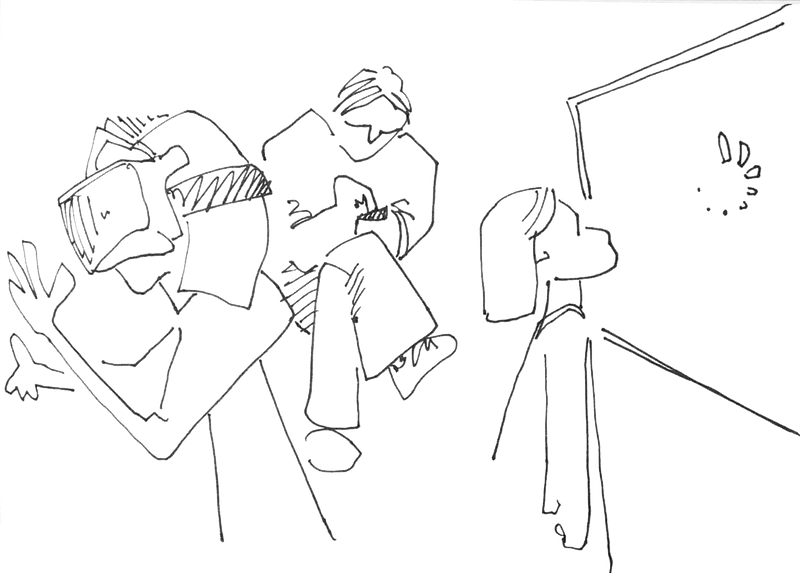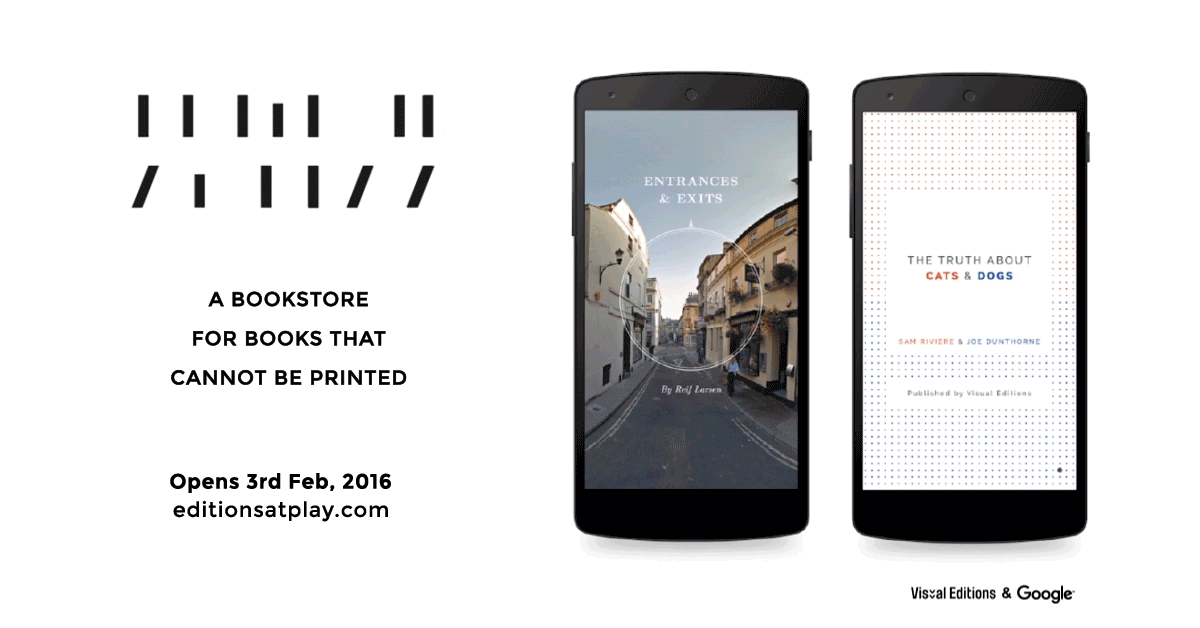Technology has always reinvented art.

From a reed stylus to the digital pen, technology has always reinvented art. (The internet is no different.)
Imagine all of culture as a series of rock-pools. The tide comes in, it goes out, the water drains away. Occasionally a high tide catapults starfish, sea urchins and unusual ideas to cross-pollinate other pools. Sometimes the water is refreshed. Sometimes the tide doesn’t quite reach high enough.
The internet has been like a storm tide. So high that no one can even remember where those rock pools were, what they contained, or what made them special (except perhaps the more remote, drier puddles).
Today, the high-water of digital’s first great tide has been marked: “digital” is simply becoming a normal thing. The weeds drift by in glittering waves of emoticon-encrusted selfies, each smartphone is pretty similar to the last, and we are beginning to see how our traditional cultural practices have been transformed by this deluge. To be honest I find that very exciting. I appreciate change is not everyone’s cup of tea as we cling like limpets to traditional forms, especially if we are already anxious about the next tide. However culture has always reinvented itself, so it is worth renewing your enchantment within the dizzying variety of culture today. That we might not care terribly for ’new’ art forms should remind us that this is just a matter of time, not truth or beauty. Tides come and they go and they will never stop. What is happening is not that special.
In my role at Google’s Creative Lab, I commission experiments. We are, as the name suggests, a small laboratory for creativity, and we work with cultural organisations and practitioners to enable artists, writers and performers to look at new ways in which they can use digital technology to augment art, theatre and music. I believe that by experimenting with digital tools at the creative core of culture we can transform existing cultural practice without losing the intangible qualities that make the arts so valuable to society. A value that is also sometimes overlooked in our new, digital age.
One of the tidal buzzwords of the last decade has been “disruption”, and it fits very neatly with a visual metaphor of water sweeping in and turning the neat little ecosystem of our cultural rockpools upside down. The rise of the personal computer, the internet and the smartphone gave us a range of democratising tools. We have new tools of production, distribution and funding. Somehow it became perfectly conceivable that Sean Baker’s award-winning film Tangerine should be filmed on a digital telephone; we stopped being amazed that bands might distribute their content exclusively online; and eventually it even became mundane to hear of multi-million-dollar crowd-funded computer games or smart-watches, or a multi-million-dollar crowd-funded bee hive, Flow Hive.
“Creative Technology” probably makes you think of 3D printers and Virtual Reality headsets, but technology has always been revolutionising culture. I have an affection for the creative technologies of the past as well. Or is that nostalgia? The big technological revolutions, like the internet, are acknowledged: the invention of oil paint and it’s influence on the Renaissance, or the fact that without Gutenberg we would be denied the modern genius of Pride & Prejudice and Zombies. Not to mention the Iliad. Other technologies seem less obvious in their impact. The invention of the paint tube in 1841 was to be completely integral to the emergence of the Impressionists. Renoir declared, “Without colors in tubes, there would be no Cézanne, no Monet, no Pissarro, and no Impressionism.”
The camera is another solid technological invention from the nineteenth century, one which took over a century to be recognised by the art world as ‘art’. Similarly the new forms of media in the digital and virtual art spaces will endure a few more decades hung as ‘lobby exhibits’ in foyers and basements of major institutions. But eventually they will be as well regarded as might a pencil cartoon by Raphael.
The pencil is another favourite technology of mine. From the scribes of Mesopotamia to the graphic designers of Brooklyn the stylus or pen has been routinely reinvented over four thousand years. The ‘new’ pencil for virtual reality will probably look something like Tilt Brush (for the HTC Vive), drawing incredible, intangible 3-dimensional neon landscapes in a virtual studio. Someday these too will hang, virtually, in the Art Gallery of New South Wales. For future audiences, your children or grand-children.
The artist is a great (usually non-scientific) experimenter, and sometimes that, in itself, is their body of work. An entire career devoted to an exploration of a form or artistic practise regardless of the newfangledness of the medium. It is the expression, and the connection that it makes with it’s audience that matters. For the great artists, very frequently, the audience tend not to have been born while the work is being made. In 2008, David Hockney started creating works using his iPhone, then he moved on to iPads and distributed the works by email, creating multiple digital copies of a soon to be deleted digital original. It is conceptually iconoclastic and visually beautiful.
Would we even know of Ai Wei Wei’s work without the internet? It is as integral to his practice as a medium as it is as a media, he has spun it into the fabric of his work since he first started blogging. It is his use of technology as an art piece rather than simply a mouthpiece that we are celebrating at the National Gallery of Victoria. My laboratory is not in the same realm as great artists. If we are trying to do anything — it is to allow artists and writers and creatives to understand these potentials, and the difference between possible, probable, and impossible. In other words, how to play with the latest kinds of pencils.
Most recently we have been working with five international authors and British publisher, Visual Editions, to try and unpick the limitations of the book from a digital perspective. Editions at Play is an experiment in creating books that cannot be printed — books that use digital design to do things printed books never could. They’re books that change dynamically on your phone, using all the attributes of the modern mobile web. Initially a series of four books, some use maps and streetview, others create a dialogue, one book changes as you read it and another sets science-fact and science-fiction together in a cartoon world.

The 2016 Adelaide Fringe held the premiere of Ghosts, Toast and the Things Unsaid — an experimental theatre piece created with our collaborators, Sandpit. An audience of two stood in the centre of a performance space, and connected with the performers by augmented audio — allowing you to “tune in” to a character’s thoughts just by looking at them. The play had no screens, and no virtual reality, in fact no visible computers. The audience watched and ‘listened’ to the actors inner monologues to reveal a compelling and touching drama.
The project was something of a spiritual sister piece to ACMI’s Stuck in the Middle With You: a virtual reality experience in which the viewer becomes part of the onstage performance of a live dance work originally choreographed by Obarzanek for the Sydney Dance Company ensemble.
And in case you are already wondering what future tides of creative disruption might bring, I’d suggest looking at the amazing work being done with virtual reality, with proximity technologies, directional audio, and in machine learning, and generative fiction… books written by computers? Yes, they already exist. But those are just a toe dipped in the water of another incoming tide.
